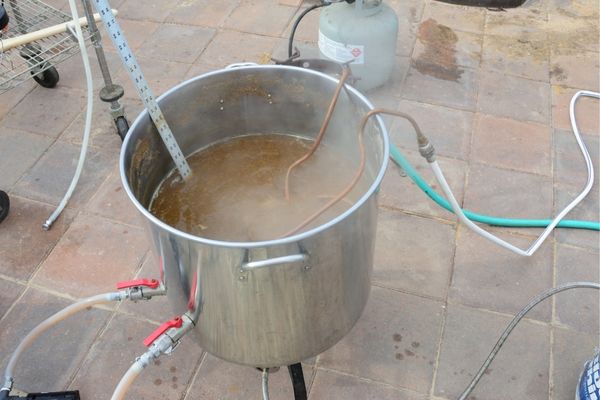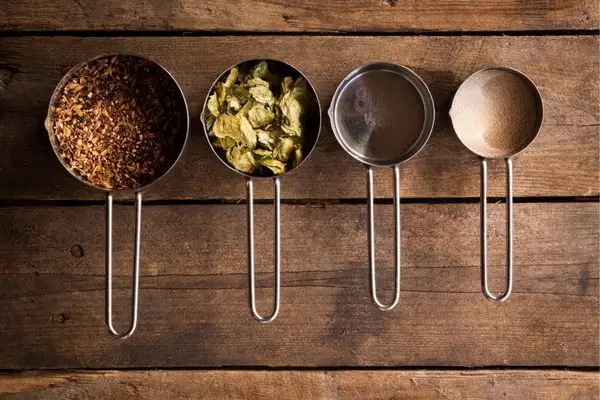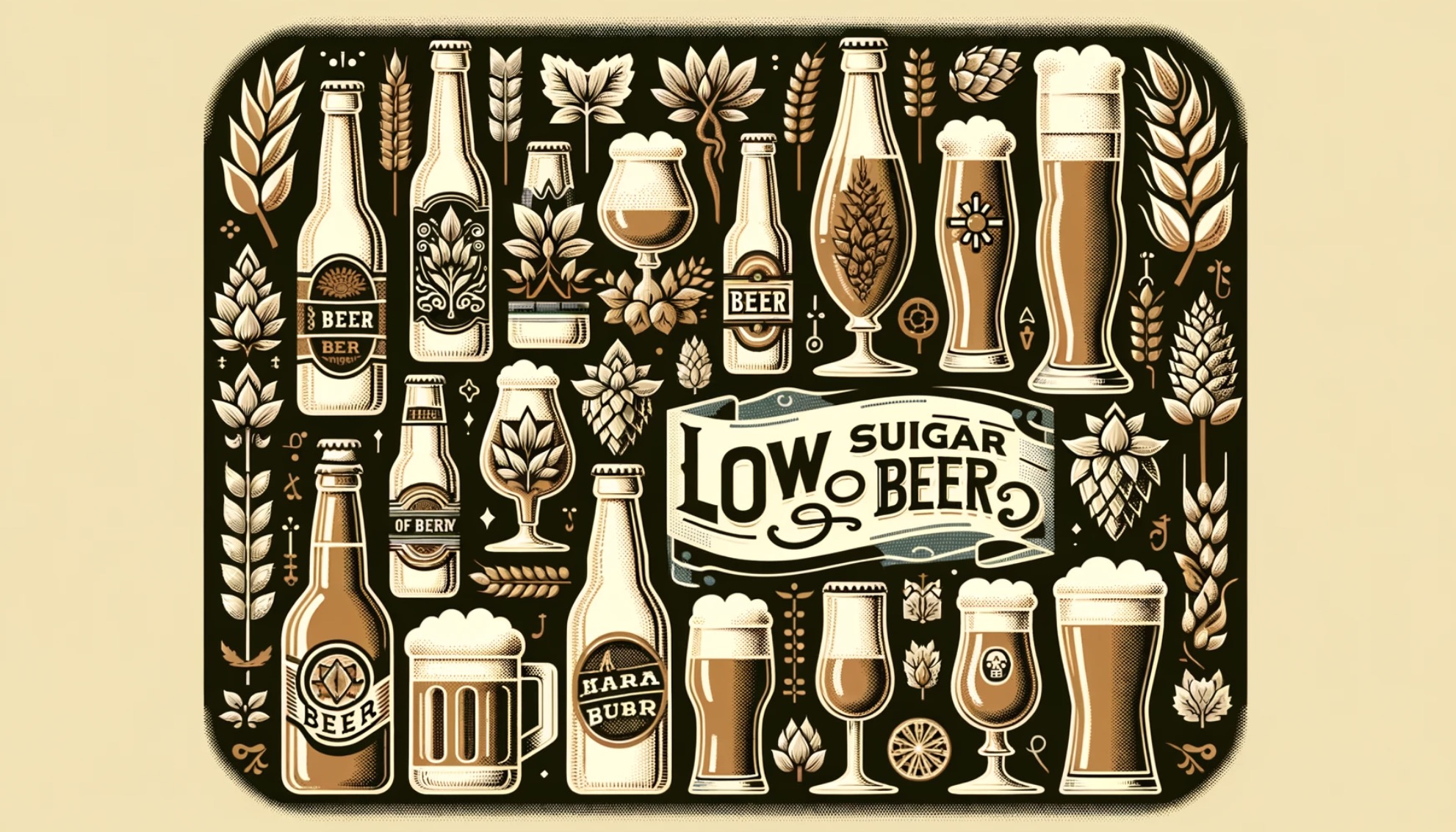As a seasoned brewer with years of experience under my belt, I’ve dipped my toes into various forms of brewing.
From crafting the perfect pint of beer to concocting a sweet and satisfying mead, I’ve done it all. But one question I often get asked is, “Is mead easier to make than beer?“
The answer is a resounding: “Yes, mead is generally easier to make than beer“. This is because beer involves malting and heating processes to release the sugars from the grains rather than just fermenting the sugars directly like you do with wines and mead.
Beer is also carbonated and as carbonation requires kegging or bottle carbonation, this only adds to its complexity!
Now, let’s delve into why this is the case, and explore the ins and outs of brewing mead and beer.
Historical Context of Mead and Beer
Beer: A Staple in Human History
Beer brewing dates back to ancient times, with evidence of beer production found in ancient Mesopotamia and Egypt. The process of brewing beer is relatively complicated, requiring a set of specific ingredients: water, malted barley, hops, and yeast.
The brewing process involves several steps, including malting, mashing, boiling, fermenting, and bottling. Each step needs to be carefully monitored and controlled to ensure the best possible outcome.
Mead: The Ancient Elixir
Mead, often referred to as the “nectar of the gods,” has an equally rich history. Believed to be the oldest known alcoholic beverage, mead was a staple in the diets of ancient Greeks, Romans, Egyptians, and Scandinavians.

Unlike beer, mead requires only three basic ingredients: honey, water, and yeast. The simplicity of ingredients and process makes mead an easier brewing option for beginners.
The Brewing Process: Mead Vs. Beer
Beer brewing is a detailed and time-consuming process. It starts with malting the barley, where the grains are soaked in water and allowed to germinate. Then they’re dried in a kiln to halt the germination process. The malted barley is then mashed with hot water to extract the sugars.

The sweet liquid, known as wort, is then boiled with hops for flavor and bitterness. Once the wort has cooled, yeast is added, and the fermentation process begins.
After fermentation is completed, the beer is bottled and allowed to carbonate before it’s ready to drink. This process can take anywhere from a few weeks to a few months.
Brewing Mead: A Simpler Process
On the other hand, brewing mead is a much simpler process. It involves mixing honey with warm water until it’s completely dissolved. The mixture is then cooled and fermented with yeast.

After fermentation, the mead is bottled and allowed to age.
This process can take a few months to a year or more, but the actual hands-on time is significantly less than beer brewing.
The Ingredients: Mead Vs. Beer
Beer Ingredients: Variety and Complexity
The ingredients used in beer brewing can vary greatly. Different types of malted barley, a variety of hops, and numerous strains of yeast all contribute to the flavor, aroma, and body of the beer.

The complexity and variety of ingredients in beer brewing can make it more challenging to master.
Mead Ingredients: Simplicity and Flexibility
In contrast, mead requires only three basic ingredients: honey, water, and yeast. The type of honey used can influence the flavor of the mead, but the process remains straightforward. Additionally, mead making offers flexibility – you can add fruits, spices, and other flavorings to create a unique and personalized brew.
Conclusion
In conclusion, mead is generally easier to make than beer due to its simplicity and the fewer steps involved in the brewing process. However, both mead and beer brewing are rewarding pursuits that allow for creativity and personalization. Whether you choose to brew beer or make mead, the end result is a delicious and satisfying beverage that you can proudly say you made yourself.
Here are some key points to remember:
1. Beer brewing requires more ingredients than mead making.
2. The brewing process for beer is more complex and time-consuming than that for mead.
3. The variety and complexity of ingredients in beer brewing can be challenging for beginners.
4. Mead making offers more flexibility in terms of flavorings and additives.
5. Both beer and mead making allow for creativity and personalization.
6. Mead is considered the oldest known alcoholic beverage.
7. Beer brewing has a rich history dating back to ancient times.
8. The main ingredients for mead are honey, water, and yeast.
9. The main ingredients for beer are water, malted barley, hops, and yeast.
10. Despite the differences, both beer and mead brewing are rewarding and satisfying hobbies.
In my personal opinion, while beer brewing may be a more complex process, both endeavors are rewarding in their own way. There’s a certain satisfaction that comes from creating a unique brew, whether it’s a hoppy IPA or a sweet, honey-infused mead. So, why not try your hand at both and see which one you prefer? After all, the joy of brewing lies in the journey as much as in the final product.
FAQs
What is the easiest alcohol to make?
The easiest alcohol to make at home would be wine.
Is it cheaper to make my own alcohol?
Yes, making your own alcohol can be cheaper compared to buying it from a store. By producing your own alcohol, you can control the ingredients and the process, which can save you money in the long run. However, it is important to note that there are initial costs involved in purchasing equipment and ingredients for homebrewing or distilling.
What is the best spirit for beginners?
For beginners, a great spirit to start with is vodka. It’s versatile, relatively mild in flavor, and mixes well with various ingredients. Vodka also comes in different flavors, which can make it more approachable for those new to spirits.
How to make alcohol easy and fast?
To make alcohol quickly and easily, you can follow these steps:
1. Start by selecting your desired base ingredient, such as fruits, grains, or sugar.
2. Extract the juice or fermentable sugars from the chosen ingredient. This can be done by crushing, mashing, or boiling it.
3. Add yeast to the extracted liquid to initiate fermentation. Yeast consumes the sugars and converts them into alcohol and carbon dioxide.
4. Ensure the fermentation process takes place in a controlled environment, maintaining a consistent temperature and preventing exposure to oxygen.
5. Let the mixture ferment for a specific period, typically a few days to a few weeks, depending on the desired alcohol strength.
6. Once fermentation is complete, strain the liquid to remove any solids or sediment.
7. If desired, you can age the alcohol to enhance its flavor and smoothness. This step is optional and depends on the type of alcohol you are making.
8. Finally, bottle the alcohol and allow it to further mature or enjoy it right away.
Remember, it is important to research and follow local laws and regulations regarding alcohol production and consumption.
What is the easiest spirit to brew?
The easiest spirit to brew for beginners would be a simple fruit-based liqueur.
What is the easiest spirit to distill?
The easiest spirit to distill is vodka.




